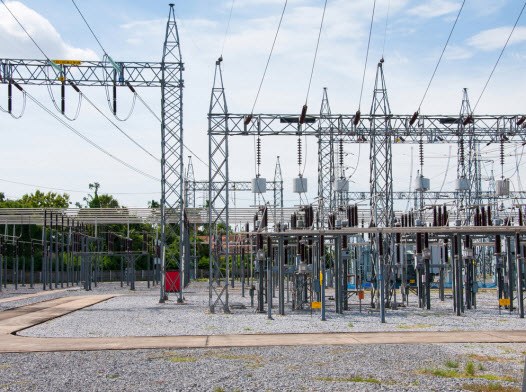What is power quality?
Power quality can have different meanings depending on whether one is an energy producer or consumer. For utilities or system operators, power quality can indicate the reliability of the grid to deliver electricity without interruption. Power quality can also refer to the delivery of power compatible with the electrical loads used by utility customers or the resiliency of the grid to quickly compensate for or recover from power-system disturbances. For energy consumers, power quality is the reliable supply of power compatible with the electric loads present in a business or residence.
Ideally, a utility supplies AC voltage as a pure sine wave with amplitude and frequency as set by national standards (220V/50Hz is the standard in most of the world, while 110V/60Hz is the standard in North America and some other areas). In real life, no power source is ideal and many types of disturbances will affect the characteristics of a pure AC sinusoid. These disturbances can range in duration from a few nanoseconds (transients) to a few milli-seconds (voltages swells or sags) to even steady-state disturbances such as harmonic distortions or frequency/voltage fluctuations. Power quality equipment can monitor and analyze the systems control and rectify any issues.
Power quality disturbances come from multiple sources. As shown in Figure 1 below, the Electric Power Research Institute (EPRI) estimates that voltage sags and swells comprise a large majority (87%) of these disturbances. Voltage sags can occur with the sudden switching on of large loads such as large industrial motors in a factory, or a regional-wide start of hundreds of thousands of air conditioning units on an extremely hot summer afternoon.
These power quality disturbances can cause significant economic losses through lost productivity. One European industry survey estimated an annual impact of 150 billion euros due to issues with power quality.
Because of the importance of ensuring power quality, both electric utilities and industrial manufacturers around the world are investing in equipment to monitor power quality in real time in order to minimize these disruptions.
Power quality analyzers (PQAs) are used to help utilities and industrial enterprises monitor and control power quality. PQAs are installed at key points in the grid such as distribution substations. In some regions, regulations require utilities to monitor power quality at each substation. In other cases utilities will use PQAs at substations which serve large industrial consumers to monitor capacity and keep a record of power quality over time in case of disputes. In turn, industrial facilities use PQAs to monitor the service quality entering their facilities in order to protect sensitive (and valuable) equipment.
The industry has agreed on several international standards to harmonize methods for the measurement and interpretation of power quality parameters. IEC61000-4-30 is the most widely adopted of these standards. It describes measurement and interpretation methods for each relevant parameter in terms that give reliable and repeatable results, regardless of the method’s implementation. This standard addresses measurement methods for in-situ measurements.
Power quality parameters defined in IEC61000-4-30:
- Supply voltage and current magnitude
- Voltage dips (sags)
- Voltage swells
- Voltage interruptions
- Power frequency
- Voltage and current harmonics and inter-harmonics
- Supply voltage and current
- Flicker
- Mains signaling on supply voltage
- Rapid voltage changes
TI recently released a new TI Designs reference design that demonstrates how to add power quality harmonic analysis to a standard polpyphase electric meter. The Total Harmonic Distortion Measurement for Energy Monitoring reference design monitors voltage sags and swells and measures total harmonic distortion for both voltage and current. It also demonstrates four-quadrant energy measurement with ANSI C12.20 Class 0.2 accuracy while calculating fundamental active and reactive power, active and reactive energy, RMS current and voltage, and power factor. Future reference designs will add even more capabilities for monitoring power quality and help prevent potentially damaging disruptions.
See TI's complete Grid Infrastructure Solutions and Power Quality Analyzer designs.


